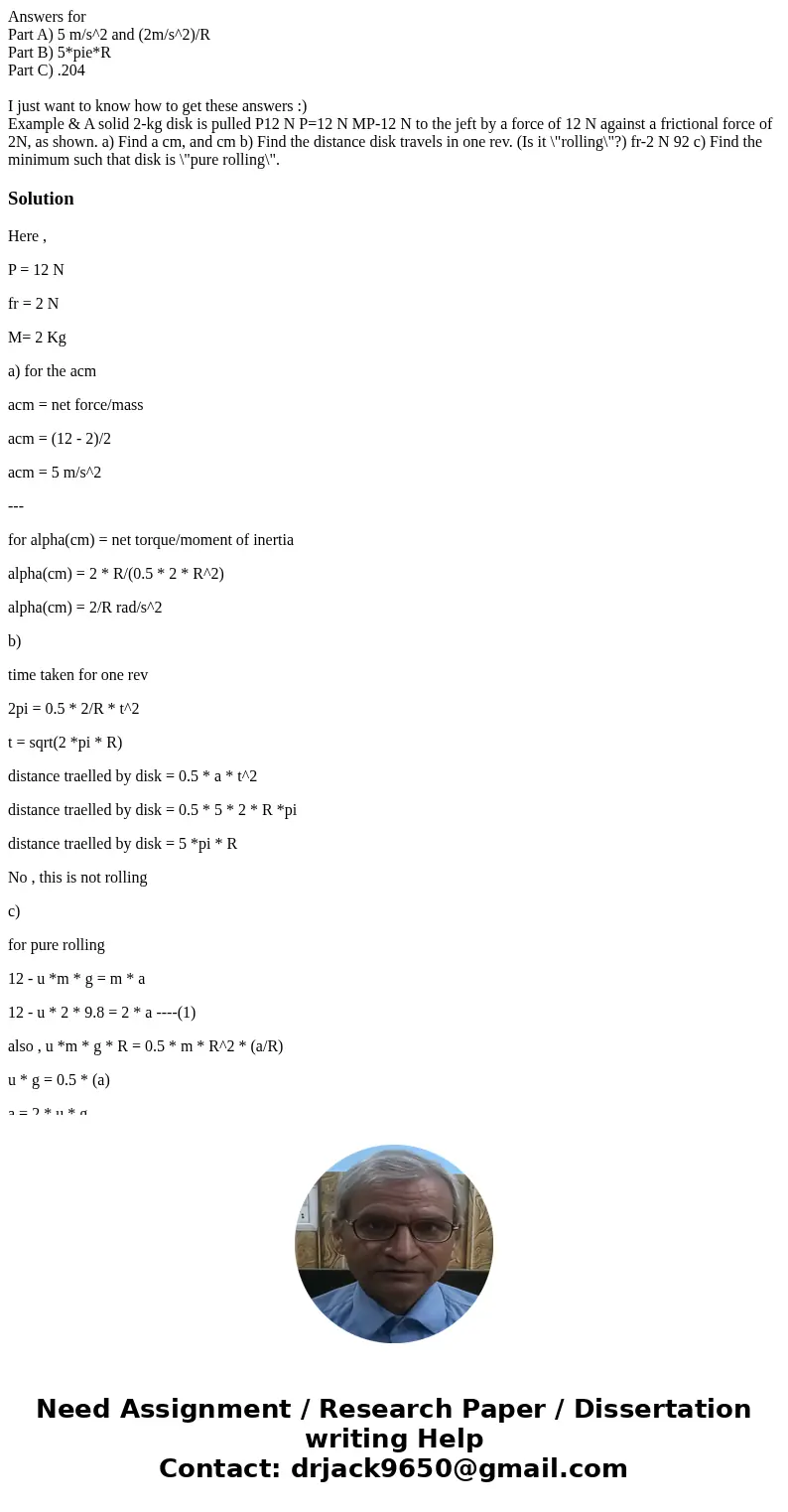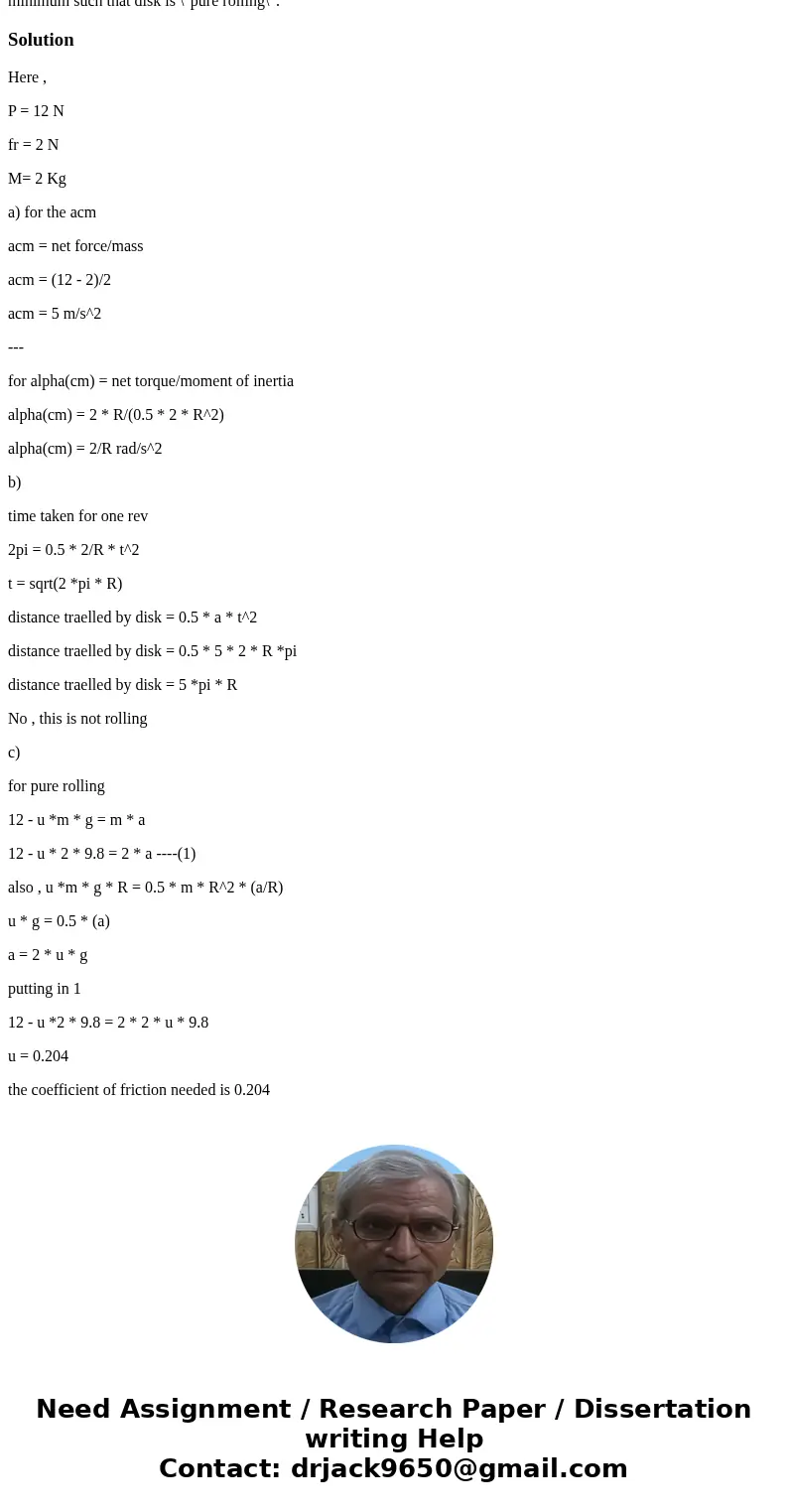Answers for Part A 5 ms2 and 2ms2R Part B 5pieR Part C 204 I
Answers for
Part A) 5 m/s^2 and (2m/s^2)/R
Part B) 5*pie*R
Part C) .204
I just want to know how to get these answers :)
Example & A solid 2-kg disk is pulled P12 N P=12 N MP-12 N to the jeft by a force of 12 N against a frictional force of 2N, as shown. a) Find a cm, and cm b) Find the distance disk travels in one rev. (Is it \"rolling\"?) fr-2 N 92 c) Find the minimum such that disk is \"pure rolling\". Solution
Here ,
P = 12 N
fr = 2 N
M= 2 Kg
a) for the acm
acm = net force/mass
acm = (12 - 2)/2
acm = 5 m/s^2
---
for alpha(cm) = net torque/moment of inertia
alpha(cm) = 2 * R/(0.5 * 2 * R^2)
alpha(cm) = 2/R rad/s^2
b)
time taken for one rev
2pi = 0.5 * 2/R * t^2
t = sqrt(2 *pi * R)
distance traelled by disk = 0.5 * a * t^2
distance traelled by disk = 0.5 * 5 * 2 * R *pi
distance traelled by disk = 5 *pi * R
No , this is not rolling
c)
for pure rolling
12 - u *m * g = m * a
12 - u * 2 * 9.8 = 2 * a ----(1)
also , u *m * g * R = 0.5 * m * R^2 * (a/R)
u * g = 0.5 * (a)
a = 2 * u * g
putting in 1
12 - u *2 * 9.8 = 2 * 2 * u * 9.8
u = 0.204
the coefficient of friction needed is 0.204


 Homework Sourse
Homework Sourse